22 August 2025 – Beyond the Budget Series
As was discussed last week , Ireland’s infrastructure has struggled to keep up with growing demand. Here, we explore the barriers to building infrastructure and the role of public investment.
Planning delays and regulatory burden
Ireland’s planning and objection system remains a major barrier to infrastructure delivery. Uncertainty around securing planning approval drives up costs and can undermine the viability of housing projects.
Even after an initially positive planning decision, there can be further delays to construction commencing on site. This mostly consists of planning appeals, which can ultimately lead to judicial reviews. Work by Joyce (2024) shows that these delays have been getting longer in recent years.
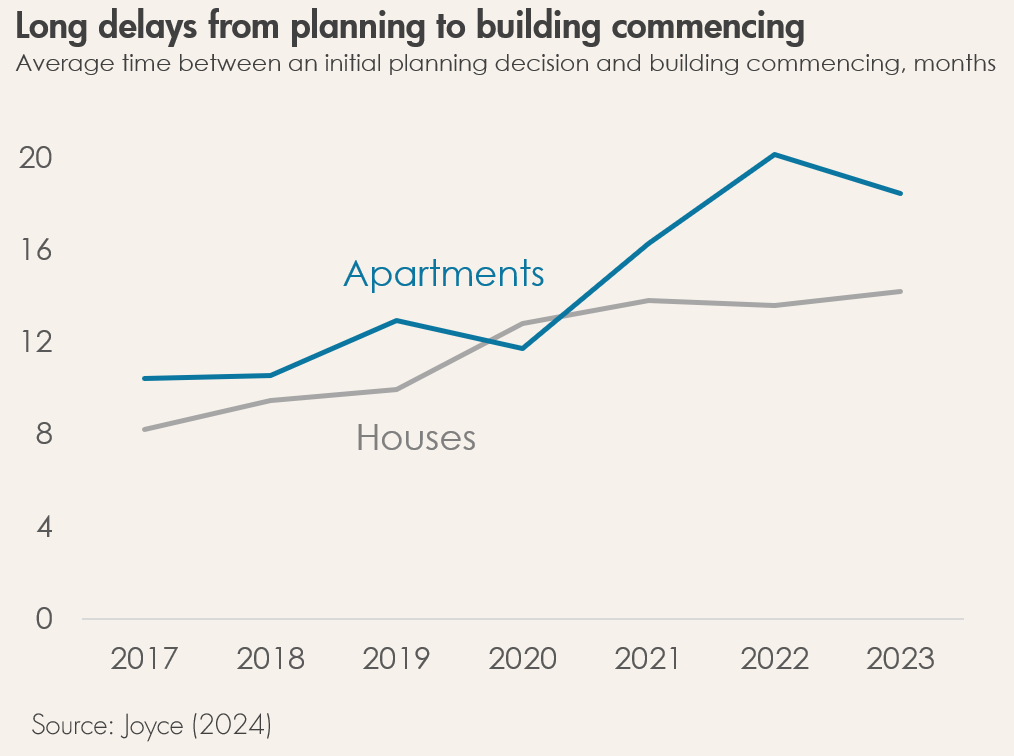
And these challenges aren’t limited to housing. The Draghi Report (2024) highlighted that Ireland has the longest permitting process in Europe for onshore wind projects —nine years versus a six-year average.
Some reforms are in motion. The Planning and Development Act, introduced in 2024, aims to streamline decision-making and reduce the likelihood of judicial reviews. The relevant section came into effect in August this year. Reforms are badly needed; judicial reviews of decisions made by An Bord Pleanála are up 20% in the first half of this year compared to last year.
Finally, Environmental Impact Assessments (EIAs) are required more often in Ireland than in other European countries. This is because Irish legislation has made this necessary for much smaller projects than the relevant EU directive requires (see Keyes, 2025 and Roantree, 2025). This is likely to be reviewed as the Planning and Development Act is implemented.
While EIAs themselves are typically not costly, they do take time and can cause delays (particularly if seasonal surveys are required). More importantly, they add risk to projects. An environmental impact may be discovered that requires expensive mitigation in order to proceed with the project. There is clearly a balance to be struck between protecting the environment and facilitating the building of key infrastructure. At present, the Irish system is more heavily leaning towards protecting the environment than in other European countries.
All of these issues inhibit private sector investment. But they also make it harder for public investment to be delivered on time and to achieve value for money.
Zoning
A lack of zoned and serviced land has been holding back homebuilding in Ireland. Goodbody (2024) recently highlighted the lack of zoned land, particularly in the Eastern and Midlands region. By contrast, the North and Western region had surplus zoned land available.
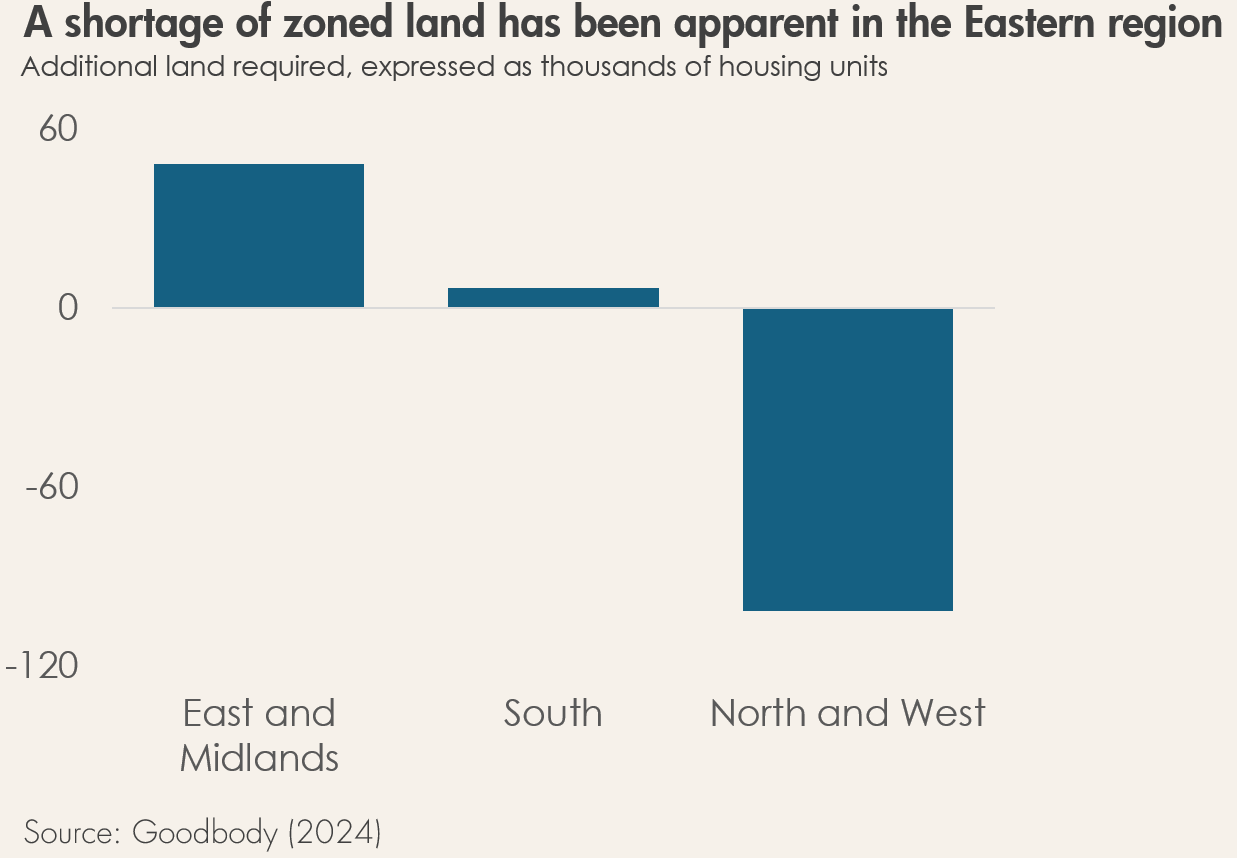
However, this situation is being tackled. Earlier this year, the National Planning Framework was revised to set more ambitious housing targets—55,000 homes per year, up from 33,000. In response, local authorities have been directed to increase the amount of land zoned for housing. They are expected to complete this work by the end of the year.
Provided this land is serviced (water, wastewater, electricity and roads), it should increase the scope for homebuilding in Ireland. As noted previously, a shortage of serviced land and smaller parcels of said land lead to smaller construction firms, which typically have lower levels of productivity.
What can public investment do?
Given the government is collecting huge amounts of corporation tax, it is tempting to say that the government should just use that money to build the infrastructure we need.
This overlooks the fact that the main constraint is not money, but the lack of spare capacity in the economy to build the infrastructure. This contrasts with the 1970s–80s, when Ireland had ample workers but insufficient funding.
The government is already investing at a high rate relative to other European countries. The revised National Development Plan aims to keep public investment at a high level in the coming years.
Two of the key areas allocated substantial funding under the National Development Plan are electricity and water. Homebuilders have frequently cited difficulties in getting timely connections to water supply and the electricity grid. So increased public investment in these areas could encourage further private sector investment in housing.
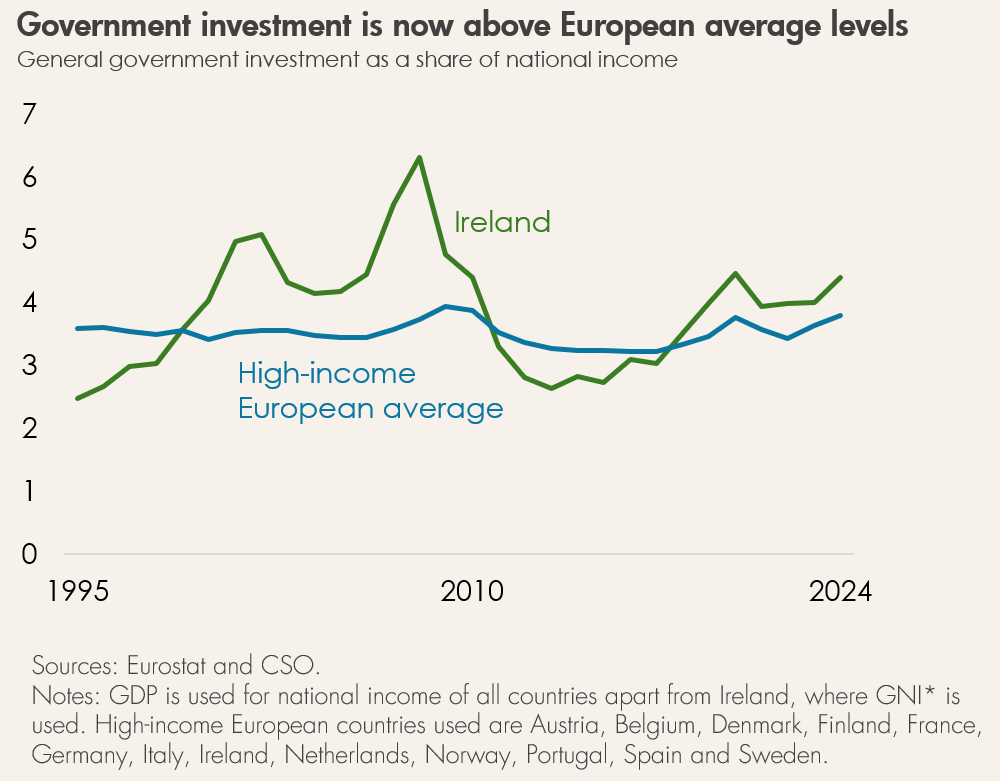
But first, we need to assess how successful we have been in delivering public investment projects. Using the National Development Plan tracker, we can see how many projects have been completed against what was initially planned. Focusing just on large projects, of the projects that were due to be completed by 2025, only half of these will be completed on time.
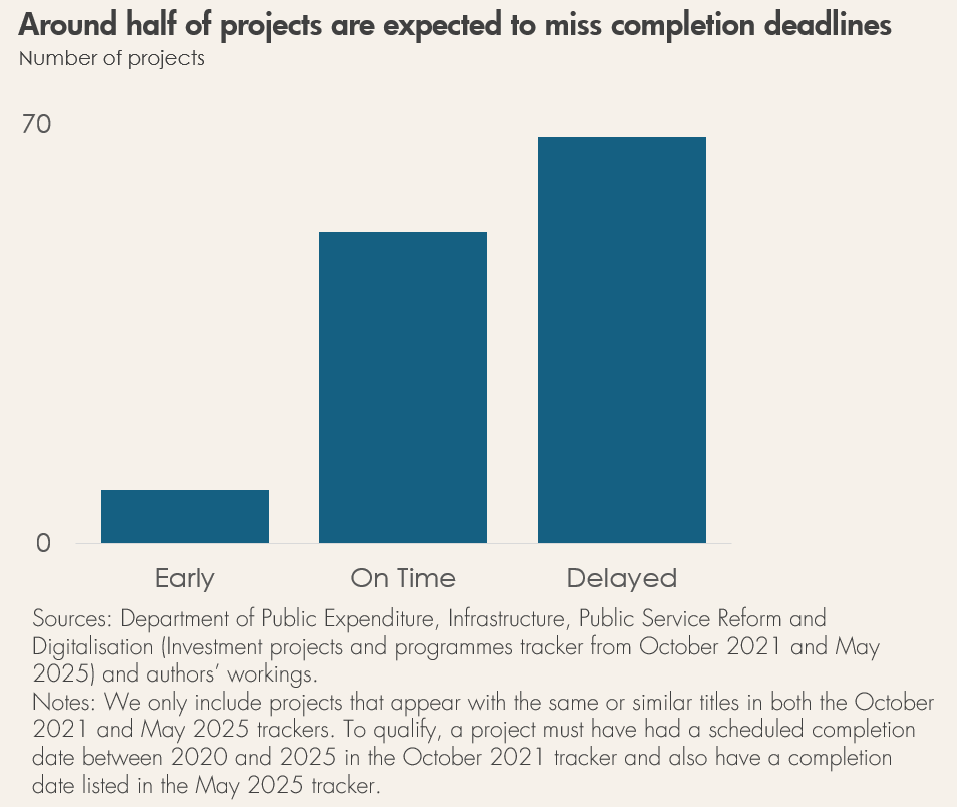
While the pandemic did slow construction activity and disrupt supply chains, other persistent challenges also played a role. Securing sufficient construction capacity and navigating the planning system continue to hinder delivery. These issues are likely to remain significant obstacles to delivering public investment.
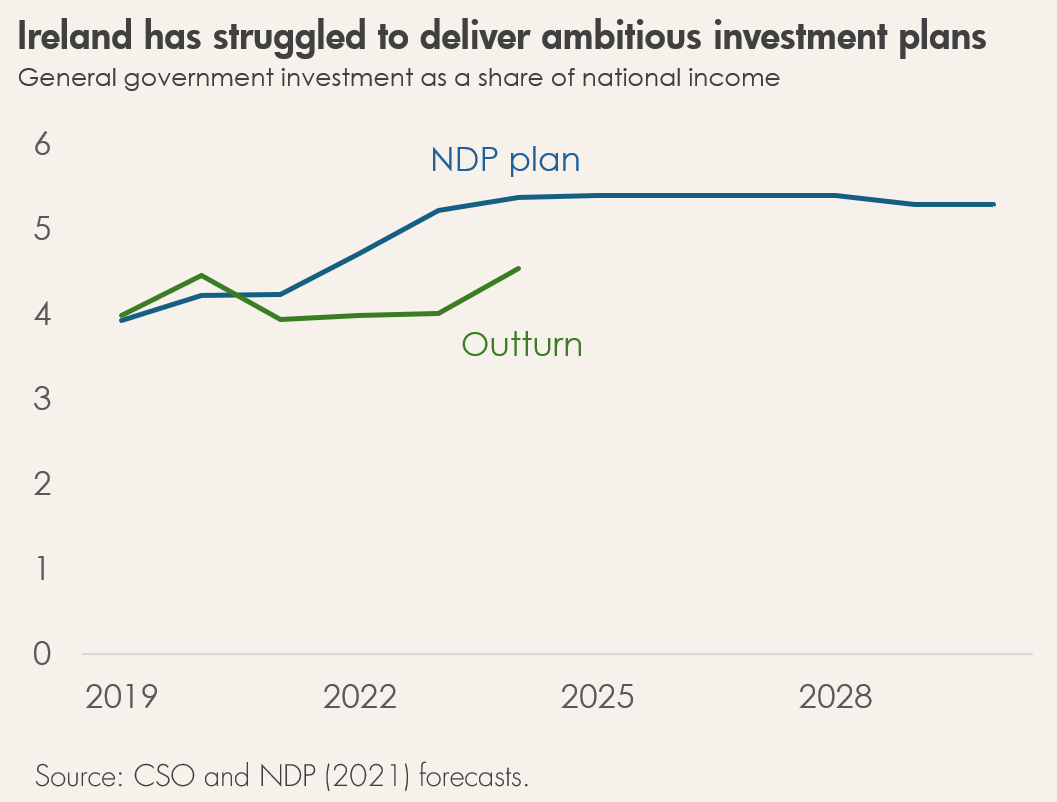
In addition to direct public investment, the government should create conditions that encourage private sector investment in Ireland’s infrastructure. Housing and renewable energy are two clear examples. In both cases, making the planning process faster, more predictable, and more likely to result in approval would make it more attractive to the private sector to play its part.
Conclusion
Ireland faces infrastructure shortfalls in many areas. Addressing these gaps will require sustained high levels of investment over many years.
The government can take two key steps to help close these infrastructure gaps. First, it should continue to invest at a high level, as it is currently doing. Second, it should foster an environment that enables the private sector to contribute effectively. This includes ensuring that essential support services—such as water and electricity grid connections—are in place. It also means having a planning system that delivers faster and more predictable in delivering decisions.
The opinions expressed and arguments employed in these blogs do not necessarily reflect the official views of the Fiscal Council.



